It is impossible to "take a look" from spectacular fluffy and terry buds. A colorful strip neat bushes emphasizes the flower bed geometry, and the carpet track generously spills the paints before higher garden flowers.
We are talking about the present "star" plant - Margitet Perennial. This flower combined the maximum of the advantages of decorative and flower culture: unpretentiousness, endurance, simplicity in breeding and leaving, as well as a bright unforgettable appearance. Daisy became a real leader in applied among landscape designers and flowerflowers. The variety of paints and variety varieties surprises and amazes with elegant and picturesque beauty. Neat and pretty flowers, daisies, can make any garden well-groomed and attractive.
What is better to choose a variety, how to plant a plant and care for it, - will be told in detail in the article. With confidence, it can be said that even a novice flower-amateur will master this task and can enjoy the natural beauty of daisies with it.
Daisy Multi-Year, Description
Daisy Multi-year refers to the genus of daisies from the Astrov family.
- From the ancient Greek MarGarites translated as "Pearl" - quite successful title For small white flowers wild daisy. Latin, the flower means "beautiful, beautiful." In England, he is called "Oko Day" - "Dais ah", and residents of Misty Albion are called the Margitus with a diminutive name of Daisy. This name, the plant received thanks to her early awakening, when his petals are revealed with the sunrise. The incredible popularity of daisies was the cause of many legends and legends about them, according to which these small and tender flowers are considered a symbol of youth and innocence.
- This perennial grassy plant is considered shinosle And it reaches no more than 30 cm. In the culture is grown more often, like a two-year-old, since after this period, inflorescences in varietal plants are minced and lose the terrain, and many outlets die.
- Rhizomethe plants have a short and bevelled, stemless stem.
- Leaves, Fielded, ovoid shape, slightly oblong or blades, with cloths at the edges. The root form a pronounced root rosette. Multiple sockets are formed small, but dense bushes with many terry baskets of colors of different color.
- Beautiful velvet flowers - The main decoration of the plant. The inflorescence is represented by a single basket with large flowers along the edge (tongue or tubular) and small (tubular), golden yellow color, in the center. Edge flowers are white, pink or red. Inflorescences are reached in diameter up to 8 cm and are located on multiple blonds. It is noteworthy that the size of the wild species is 3-4 times less than that of garden representatives. Daisies bloom in spring and bloom sometimes until the autumn itself, depending on the variety. Flowering daisy and long daisy, represents a very spectacular spectacle. The riot of paints is suspended only in hot weather, but then the bloom is renewed again. Seeds of plants ripen in June and give abundant self-sowers, which is used as seedlings. Natural areal Perennials is quite extensive: from North Africa to Asia and Europe. In fact, the daisy is an unpretentious plant and comes in any place with a temperate climate.
In the wild, daisies are low plants with small and not terry inflorescences. As a result of long-term cultivation in the culture and selection of decorative forms, many varieties were derived, which differ in sizes of inflorescences, painting and terrain.
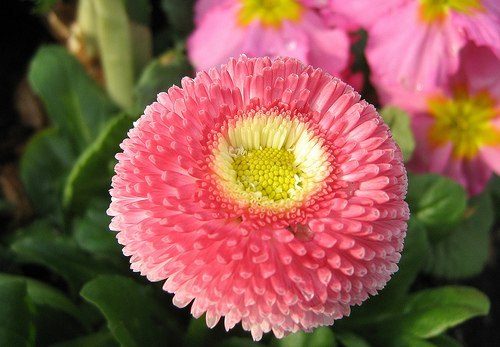
Varieties daisies perennial
Perennials, naturally, more in demand in culture than annual plants. Therefore, breeders sent their efforts to bring new varieties, it was on many years of representatives of the type of daisies. Currently, there are many varieties of many years of daisies. All garden varieties and hybrids are found, for the most part, on the basis of one species - Multi-year daily daisy (Bellis Perennis).
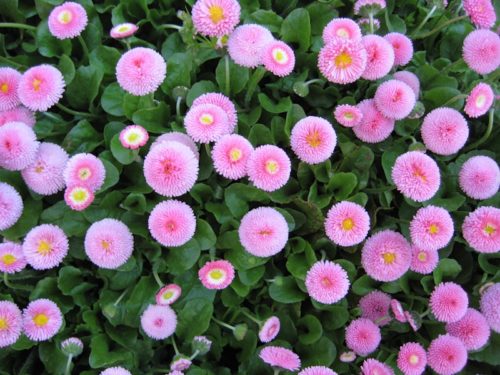
The following varieties are the most popular and common:
- Pomponic Margarita (Pomponette) is a miniature and ancient view derived in France. The variety is distinguished by a plurality of small (up to 4 cm) of terry inflorescences resembling pumps or buttons. The number of colors on one bush can reach about 40 pcs. Flowering falls for April-June. Nowadays, the color gamut variety, enriched in saturated dark red and light pink tones. This plant, thanks to compactness and abundance of lush inflorescences, are often used to fit into containers, placement on the balconies.
- Roggli Rossa - a series of daisies of red, bright pink and white paint. It has small (up to 3 cm) semi terry inflorescences. The most famous representatives: Roggli Rot, with rich dark pink flowers and Roggli Weis, - with snow-white inflorescences.
- Habanera - a series of giant varieties, has large (6 cm and more) terry inflorescences with elongated petals of white, pink and red. Blooming begins in the summer, in early June. The famous Habanera Series invariably attracts the audience on flower fairs, and the most elegant variety is considered - white with red tips. Attractive feature: baskets are less dense than other terry varieties, and it seems slightly openwork thanks to a slightly curved "petals".
- TASSO is a series of varieties of daisies on short stems with large, dense, terry inflorescences (up to 5-6 cm). There are red, pink and white varieties. Particularly attractive daisies of this variety with a gentle-pink color of the flower and, shadowing, darker core. This series of colors is a modern and improved version of the old Pomponette variety. Tasso Series is a series of daisies, a pomponic type that reach a height of not more than 10-12 cm. Large dense baskets consist of tubular dense color. Compact bushes, aligned, bloom earlier than habanera varieties. The most famous varieties of this series: Tasso Dunkelrosa (gentle-pink flowers), Tasso Erdbeersahne (buds have bright pink core and blonde on the periphery), Tasso Hellrosa (brightly raspberry inflorescence), Tasso Rot (saturated pink, reddish shades ), Tasso Weis (White Inflorescences).
- Robella is this unique series of daisies, which is highlighted by the luxurious colors of coral and salmon-pink shades, popular in the use of landscape designers. Cellomaceous baskets, a diameter of 4-5 cm, consist of dense inflorescences of rolled tubular flowers. This variety received a gold medal at the "Fleelohet. The height of the plants on average reaches 15 cm.
- Speedstar - a series with semi-world baskets and a bright yellow disc in the center, especially expressive at a variety of carmine coloring. Pink inflorescences, a yellow disc is surrounded by an additional white cantic. The plant blooms in the year of sowing, no more than 13 cm is growing into height. Claims of inflorescences: carmine, pink, white.
- Rominette presents a series of small but thick and terry baskets of white, pink, carmine-pink and red. Inflorescence diameter of about 2 cm, and the bush height - not more than 15 cm deduced sortoseriya -. Earliest timing at planting and flowering. Daisy this variety are beautiful decoration curb and container, forming, tight blooming volumetric carpet. Most popular: Rominette Rosa (pale pink inflorescences), Rominette Weis (white flowers), Rominette Karminrosa (bright carmine flowers, buds), Rominette Rot (red inflorescence).
- Bellissima - early variety, blooms in the first year of planting. . The height of the plants - about 12 cm, basket - pompon type double, to 4.5 cm in diameter daisy perennial flowers are red, pink, pink with darker contrasting center and white shades.
- Prolifera or «Hens and Chickens», which translates as "chicken and chicken" - grade daisies double inflorescence when the top central baskets grow small flowers (called the second order basket), recalling graceful wreath. That's why comparing these daisies with chicken-hen surrounded by chickens. This flower is called a miracle - the proliferation of (germination of inflorescences). Similar mini daisy began to cultivate in the XVI century, but the variety is preserved to the present day.
Reproduction common daisy
For reproduction of daisies, you can choose any one of 3 ways:
- divide the bush;
- of grafted;
- to grow from seed.
The first two methods belong to the vegetative propagation method, the latter - to the seed. Vegetative propagation techniques needed in the first place, in order to save valuable varieties of daisies, flowers that age begin to grow shallow and lose decorative. After all, during the multiplication by seed, the splitting of the signs and the plants obtained dissimilar color and terry. Transplanting (of seeds), in turn, makes it possible to grow more resistant to weather changes and the impact of pests of plants.
The division of the bush, especially planting
- The bush may be divided after 2 years from the time of planting, in the summer, during the flowering closure. Sometimes, growers practice division bush in autumn or spring, before flowering. For 2 years shrub grows well enough, but losing a decorative look, needs rejuvenation, and therefore it is necessary to plant out.
- Choose a large and healthy bush, dig it and divide a few (from 4 to 10) full parts, depending on the size of the parent bush. So that new sockets have gotten better, it cuts off all the leaves, pour flowers and buds, cut roots, leaving 5-8 cm.
- Thus, the prepared specimens are planted into the ground, better in the half-day, and watered a little more often than an adult plant until it is finally rooted. Daisy is pretty quickly coming up and even continues flowering.
This method of reproduction is not complicated, moreover, it helps to rejuvenate the variety and helps to keep all its varietal characteristics.
Shining, landing features
- When staring, you need to prepare cuttings. For this, a sharp knife or a secateur is separated from the busta daisies lateral shoots with several leaves. Then, the cuttings are planted on a bed with loose, wet soil, where they are rooted within two weeks. From above, it is better to cover them with Loutrasil - with a special light fibrous material. This procedure is usually held in May - June.
- Drainets are blooming from cuttings only for the next year.
Breeding seeds, sowing features
This method of reproduction is very convenient and simple.
- Sowing seeds in open ground is carried out at the end of June, when the temperature of the air and land is already quite high. Seeds close in the soil shallowcoke, almost on the surface of the garden, pre-explosion and fertilized. From above sprinkled with a small layer of land, ensuring a sufficient amount of light penetrating into surface layers of the soil.
- After a week, the first segments of daisies appear. Before landing for a permanent place (about 2 months), seedlings are picked - a little trimming the root. This technique allows you to grow strong and hardy bushes.
- Seared bushes need at a distance of at least 20 cm, taking into account the branches and pomp daisies. Such bushes will bloom only in the spring of next year.
- Experienced flowers manage to get buds and in the 1st year of the life of the plant, living seeds in early spring in a greenhouse. Seeds are better to put in individual containers, for example, disposable cups, so as not to injure seedlings when picking and planting seedlings at a permanent place with a lore earth. A nutritious structured soil is suitable as a substrate, which is sold in flower stores. Seed seeds in the same rules as in open ground, and create the same conditions - the temperature is about 20ºC and bright light. When shoots appear, the temperature is lowered to 12-15ºC. It will be necessary to organize additional lighting to seedlings, since the optimal length of the daylight for their normal development is 12-14 hours, and at this time of the year the days are still too short. Before disembarking, seedlings must be hardening. An important condition - the soil must be constantly maintained in a moistened state.
- Daisy Multi-Year gives abundant self-sowing. Naturally, this process is better controlled, in order to avoid the deterioration of the varietal qualities of the plant and chaotic leveling of the site. Sprouted seeds can also be diverting and replanting at a permanent place.
- Daisy seeds can not only be purchased in a specialized store, but also assemble themselves. Seed collection are carried out as they are ripening. To do this, we wake faded inflorescences, dry them, spreading a thin layer, and shakes the seeds on paper. Seeds also leave to dry in a well-ventilated room and collected in a paper bag. The finished seed material is stored in a dry place.
Landing Daisies Perennial: Conditions and Technology.
- Daisies are perennial unpretentious and easily grown at home.
- The soilalmost any, except for too alkaline or acidic medium. The optimal option will be light loam, where moisture is held well, while not stuffing. Before boarding, the plot is cleaned from weeds and loosely loose. Well-drained soil will ensure the maximum growth and development of the plant.
- Before falling into an open ground, it is necessary to prepare the soil in advance. At the autumn time is desirable feel Earth by humus and manure. This nutrition is enough to plant for a long time.
- For landing, choose a sunny place, as the flower prefers good lighting. At the same time, Dwarves do not like the active midday sun, - it is necessary to take into account when choosing a place. It will also fit the half, then shrubs will grow a little higher than in the open plot.
- When landing into open ground, they make small wells, where seedlings are placed (better with a lore land). IMPORTANT when embelling, not injury to young roots of plants. Tamping the soil around the seedlings, water them with water.
Daisy Multi-Year, Care
Caring for daisies is not complicated, as it is considered a rather unpretentious plant and even the flower-like amateur will be ascended. Like any plant, daisies need watering, feeding, soil looser and tidy.
Watering
- Regular watering, especially in dry and hot weather, will provide optimal growth and a long period of flowering daisies. The need for regular irrigation is explained by the shallow root system of daisies.
- It is important before irrigating a good soil drainage. Thanks to such a simple procedure, it will be possible to delay moisture and ensure the breathing of the lower parts of the plant.
- After irrigation, it is also necessary to jumble around the soil around the bush, ensuring better breathing of the roots. A successful solution can be mulching (grass, leaves, straw, cheese) plot with daisies. Then, you don't have to loosen the soil and fight with weeds too often, and daily watering can be less likely, because the mulch protects moisture in the soil from too fast evaporation. In addition, the mulch is prevention against filling the roots, which occurs as a result of dried up the top layer of soil.
- From the lack of moisture, the flowers of daisies minor and lose terrain. Excess water or its stagnation also negatively affects the development of the plant.
Lighting
- Open and solar places - the optimal option for growing daisies. It is necessary to ensure that the trees and shrubs do not shake the plant. They grow well and with partial shading, especially in hot weather.
Podchar
- Daisies need good feeding, so it is recommended to make fertilizers and humus at least 2 times in season 1.
- The first feeding is made in early spring, as soon as the snow melts. Carbamide (urea) in the required proportions are scattered on the gardening beds with daisies. This nitrogen fertilizer provides full-fledged nutrition of intensively growing colors. It is also possible to apply liquid feeding at the rate of: 15 g of ammonium nitrate, 30 g of simple superphosphate, 7-8 g of potassium sulfate per 1 m2.
- In the summer, when young inflorescences appear, the bushes are feeding with mineral fertilizers, for example, nitroammophos.
- During the flowering period, phosphorus and potassium are particularly useful to daisies. The last feeding of the season should also consist of their combinations of these substances.
Wintering
- Daisies perennial are considered frost-resistant plants, so they carry winter without problems. The only minus - the roots of young plants are very vulnerable and require additional care. Under such crops it is desirable to plug a peat.
- For the winter, daisies do not cut off the leaves and do not remove buds, it winter with them under the snow. It is recommended for the winter bushes to cover with dry leaves or spruce sweets.
- The optimal solution will also be the autumn mulching of the area with thick (about 8 cm) layer of sawdust, humidiation, peat or any other material that protects the surface root system of plants from freezing in the absence of snow
Trimming
- In order for daisies to bloom richly and longer, you need to constantly cut or pinch off the faded baskets in which new seeds are tied. This technique will also be prevented by uncontrollable self-seams ..
Pests and diseases
Daisy perennial, in general, are not too susceptible to disease.
- Plant may be amazed mathematicaloh ROS.oh or ser.oh rotnS. At the same time, leaves remove the leaves with a white or grayish flare, and the flowers are sprinkled with the infusion of garlic or a horsetail. If the lesions are more intense, the plants are treated with a solution of manganese, colloidal sulfur, "topaz" or burglar mixture, and sick specimens or their affected parts are burned. The cause of the disease may be the following factors:
-Curchasted landings and insufficient ventilation of the site;
- full fertilization;
-The blocking of plants and soil;
- Large difference in day and night temperatures.
- Sometimes daisies suffer from growingcaused by bacteria - mycoplasmasms. As a result of the disease, the inflorescences are flashed, the flowers are drawn, the leaves are reduced and discolored. The disease is most often manifested in the early summer. Such specimens should be burned, removing them along with the land.
- Daisy may be amazed tongsdestroyed by insecticide processing, for example, carbofos or accutelle.
- Damage to daisies also miceWith which you can fight, laying out on the straight of the bait with poison.
- Hedgehog the pests of daisies can become slug or Caterpillars. It is easy to get rid of them by applying the desired insecticide (Bicol, lepyocide Metaldehyde).

Daisy in Landscape Design
Due to the variety of colors and attractive appearance, most varieties of daisies have found their use in landscape design. In addition to white, pink, red and their shades, there are spectacular two-color instances, and even a strip or speck. Lush terry inflorescences, as if bright New Year's balls, on low-spirited bushes look elegantly and impressive.
On large areas, the daisy looks great as a carpet from the living colors. In a moderately wet and half-directed site, daisies bloom beautifully and brightly. Flowers can be planted by a group or unevenly, but not by chance. It is better to think about the future composition in advance and pick up flowers - companions. It is elegant and chose a daisy in the company of ferns and low-speed conifers. They are also perfectly combined with Lukovichny -Tulpan and daffodils.
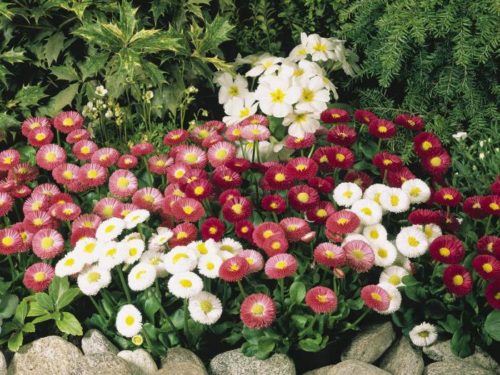
Due to the small height of daisies, they often plant along burgours, on flowerbeds, lawns and in portable garden.
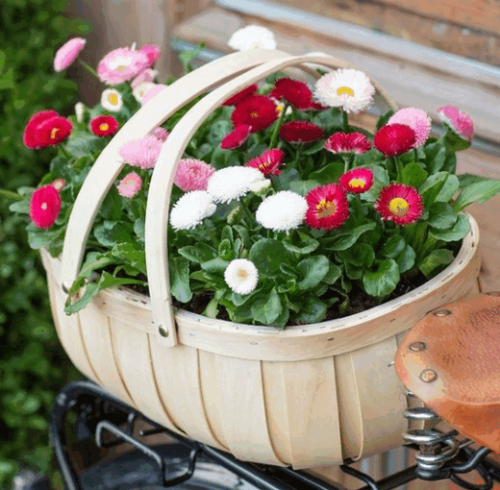
Such a non-standard version of the garden decoration attracts attention to an unusual solution and a spectacular result. Portable kindergarten can be arranged in a wooden barrel, a trough, a ceramic vase or a wicker basket. They are best placed in the quiet corners of the garden, near the rest of the rest, near the water bodies, along the edges of the lawn or the site, at the end of the living hedge or at the porch at home. Daisy belongs to the plants of a long day, so they can delight eyes with blossom from the beginning of spring and until late summer.
It looks great on the daisy both in pots or vases on the balcony or windowsill, and on the flowerbed for the design of mixboraders or alpine slide.
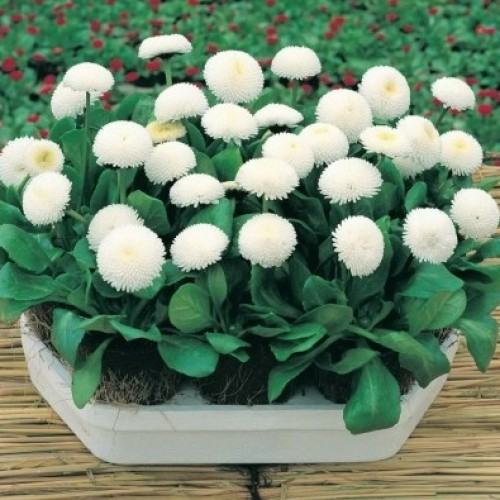
Often in landscape design by daisy, home reservoirs decorated. It is planted along the shores or in waterproof tanks that float on the surface of the pond.
Daisy Perennial is valued by flowers and landscape designers not only for a beautiful appearance, but also for unpretentiousness and endurance.
Daisies are often used to create miniature bouquets. They are well combined with cultures, blooming in spring: Narcissus, forget-me-not, hyacinth, tulip, pansies.
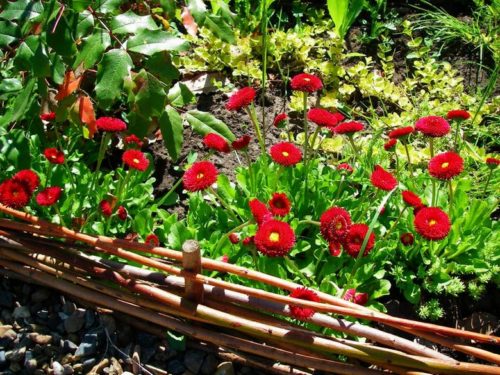
What a flower garden or flower bed will look, depends on the fantasy and desire for everyone. Having secured the correct care, it is easy to count on long and abundant flowering. And in the fact that everyone will be able to grow daisies independently, do not have to doubt. Unpretentious when planting and leaving the culture, differs in frost resistance and endurance. At least effort and attention, and such irresistible beauty will be able to delight and inspire flower for new accomplishments.
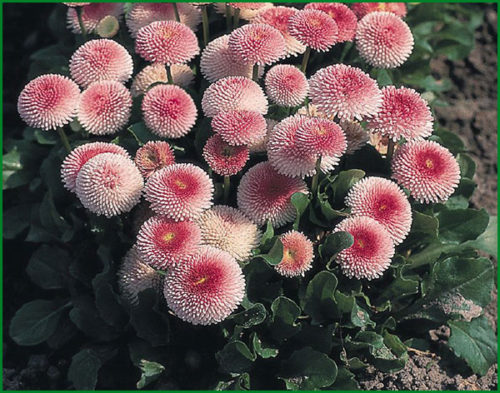
Daisy Multi-Year, Photo
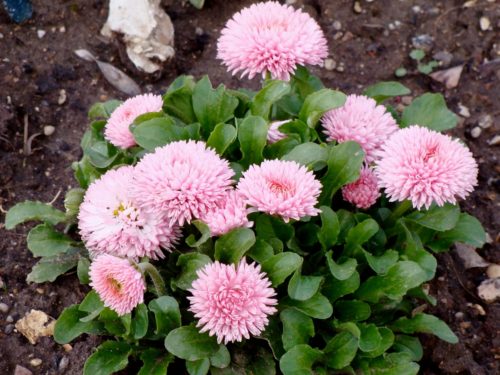

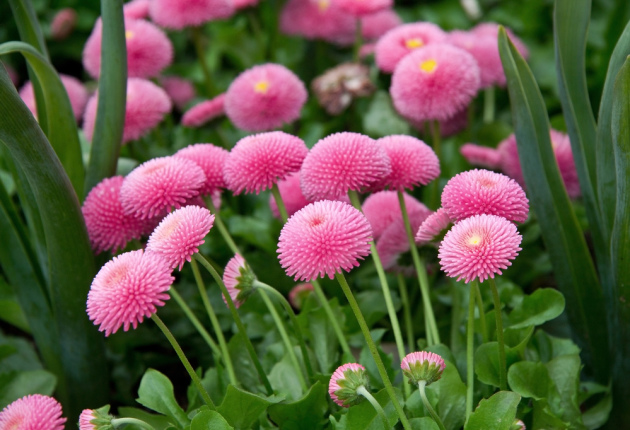
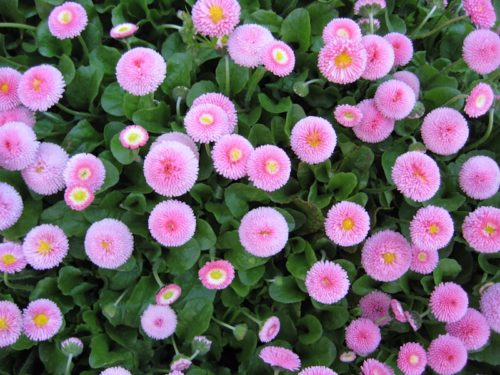
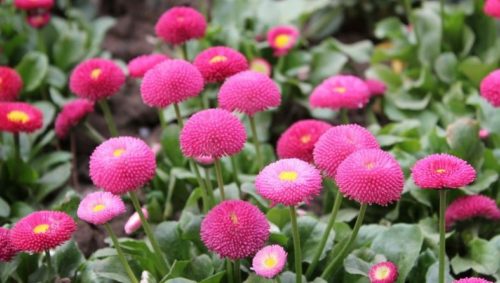
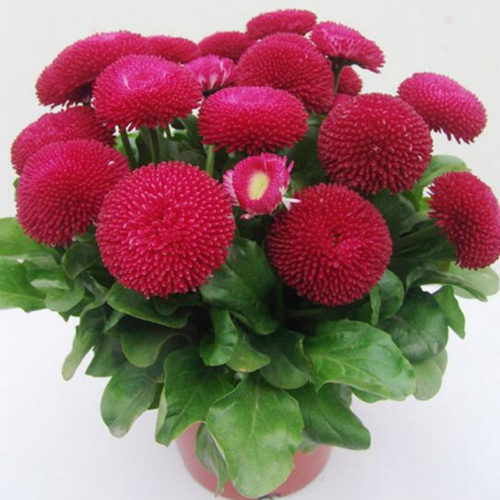
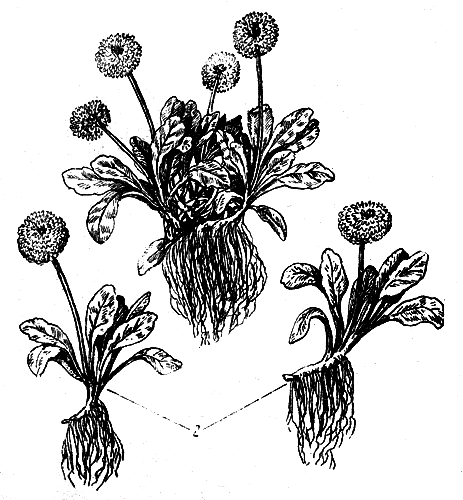
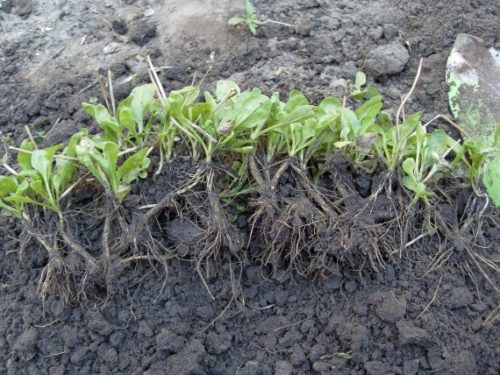
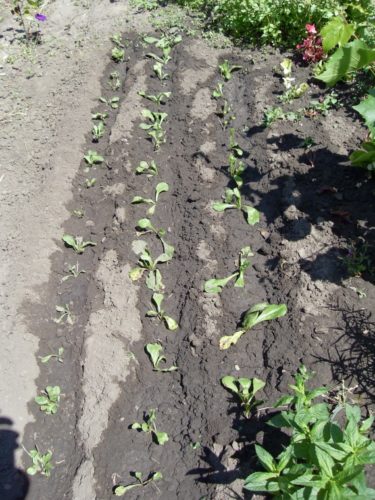
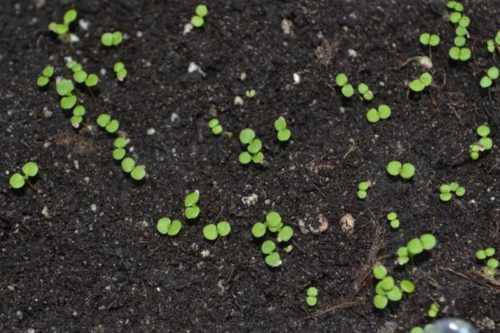
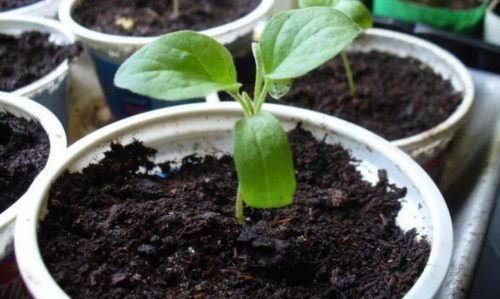
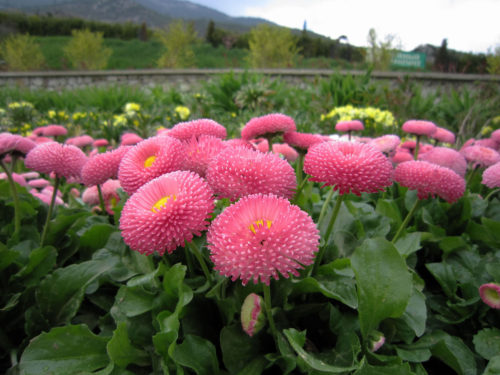
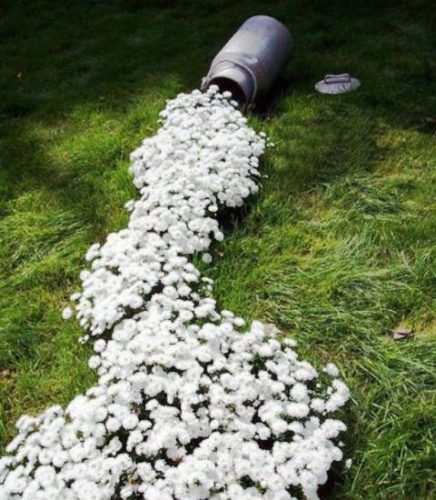
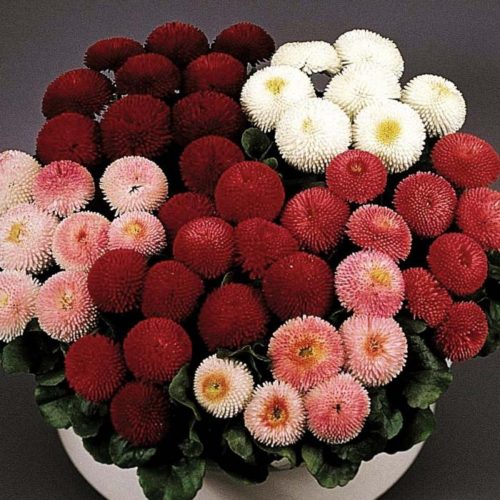
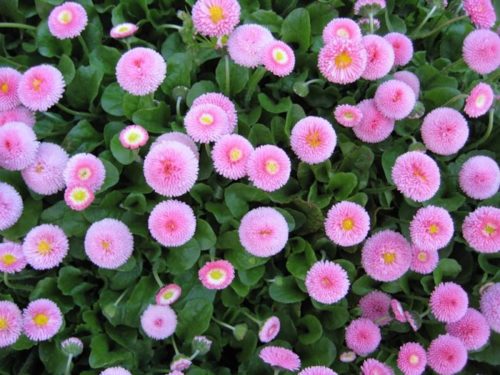
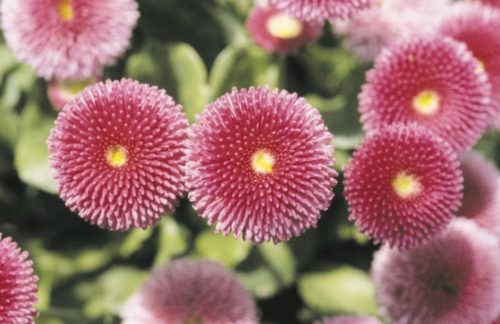


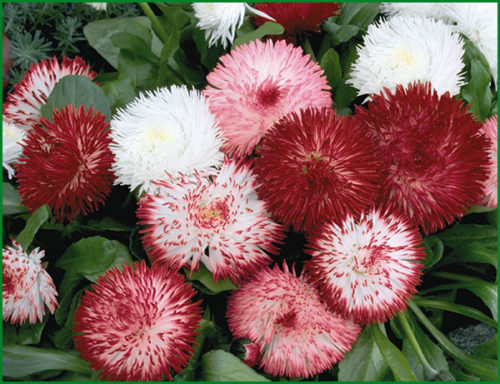
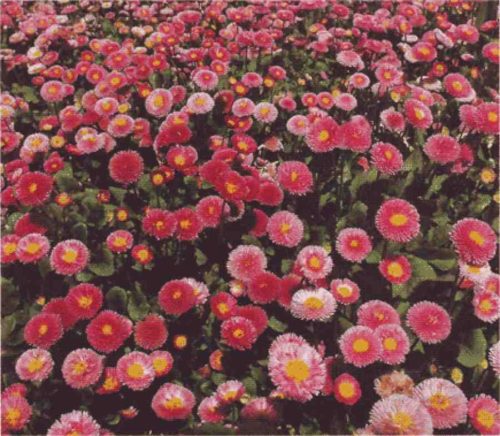
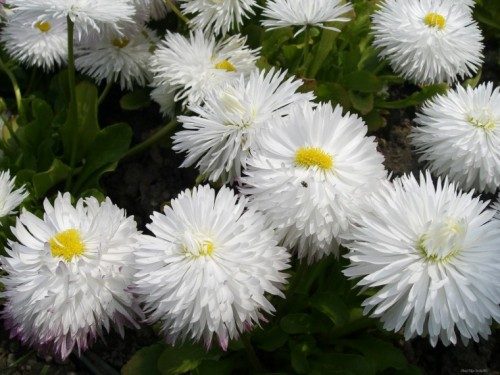
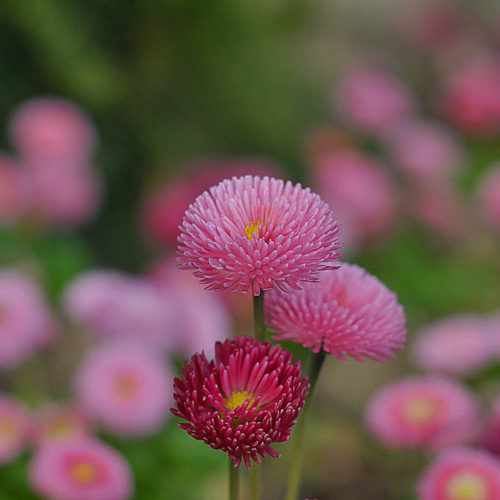
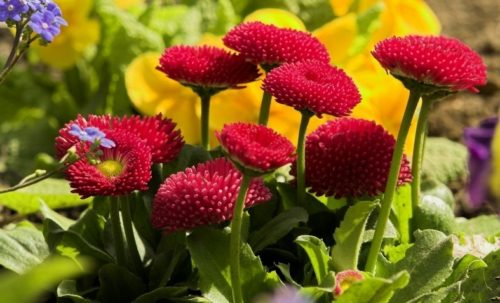
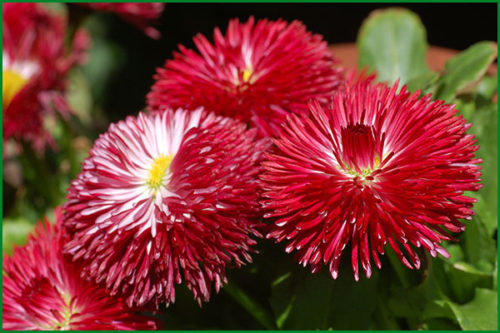
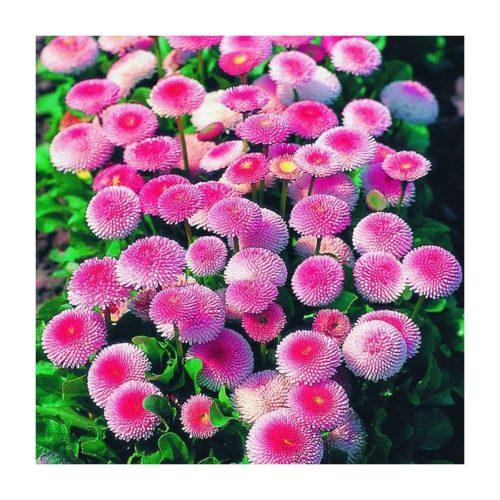
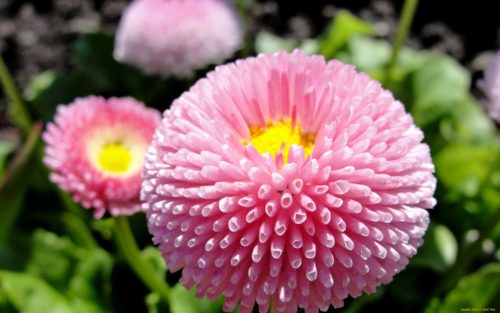
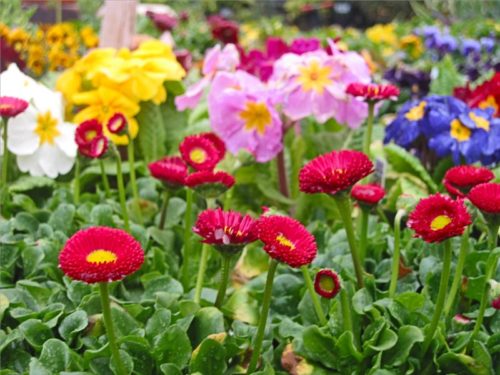
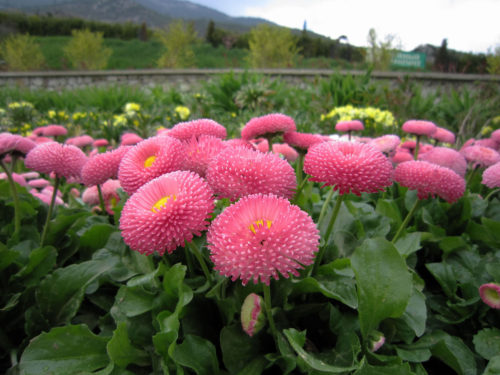
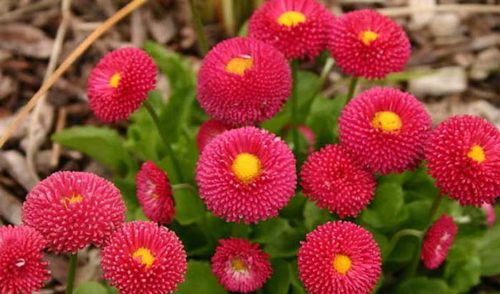
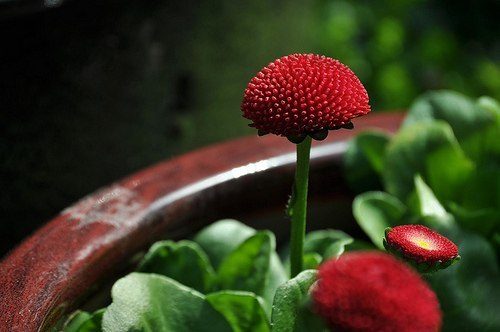
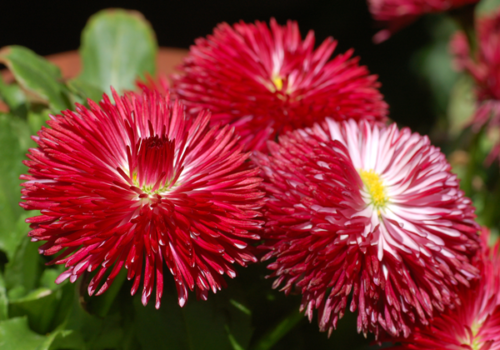
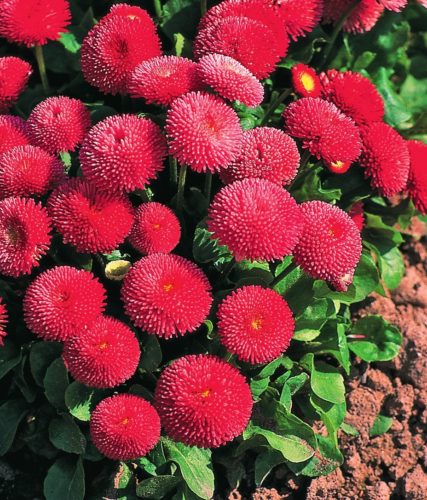
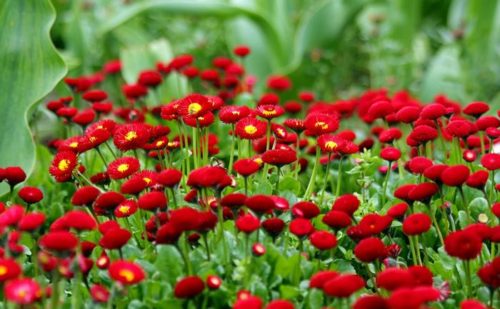












 Start a discussion ...
Start a discussion ...